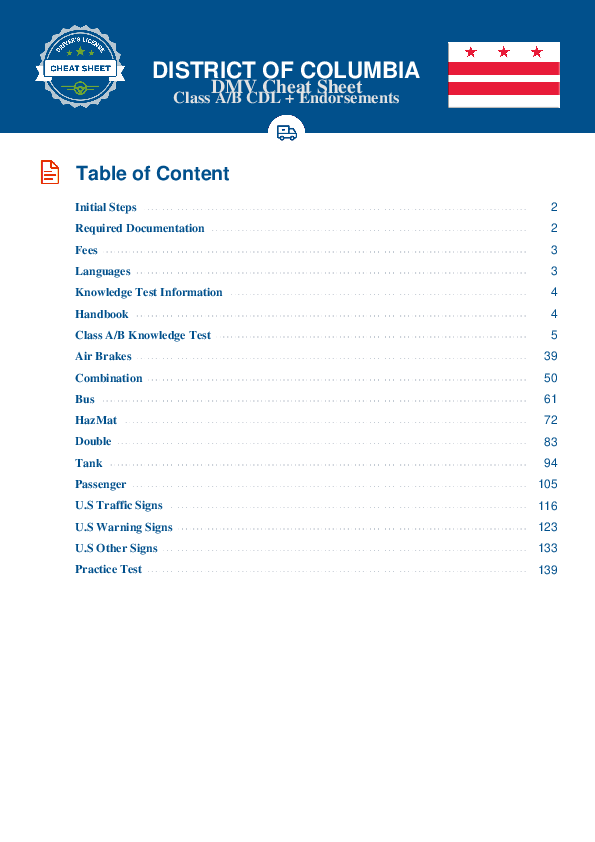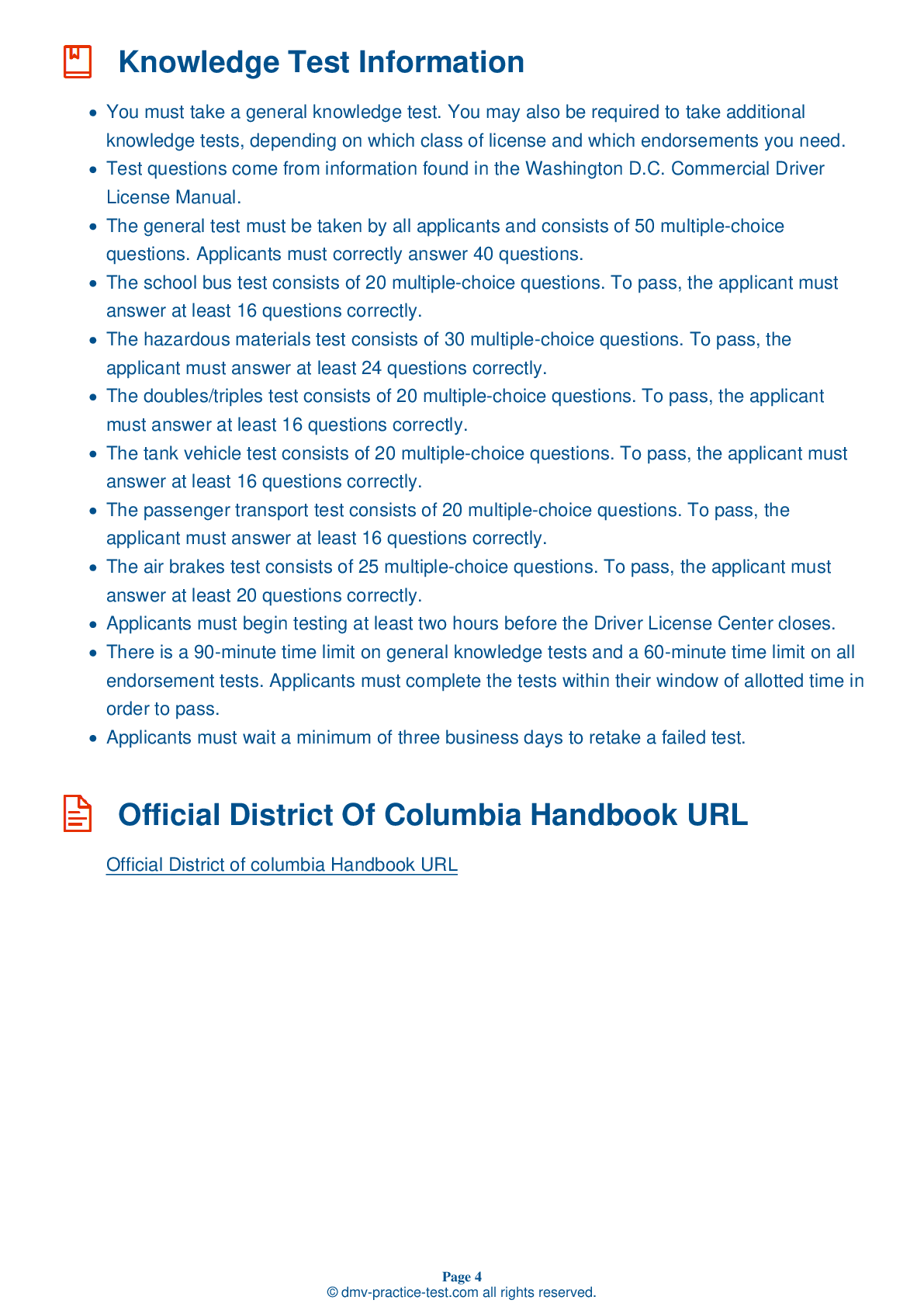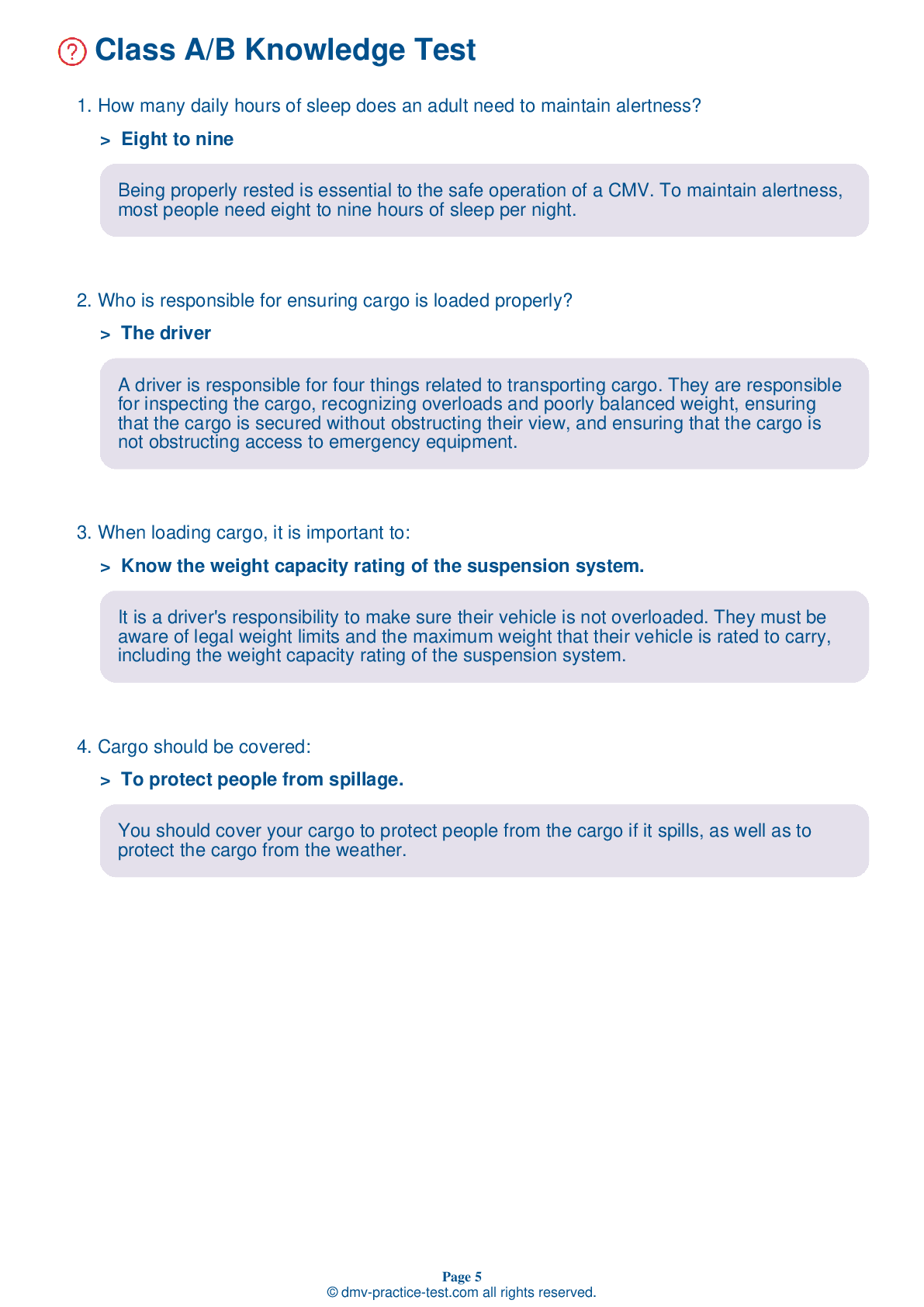Bus Driver Testing | District Of Columbia 2025 #1
Train for FREE online with our DC bus CDL test. The official exam test consists of several obligatory parts, with all of them checking your knowledge of different blocks of road rules. If you need to obtain a license in District Of Columbia in 2025, learn how to become a bus driver and then practice as much as possible. Free sample tests published on our website will help you check and improve your knowledge and boost your grades. Please bear in mind that DMV requirements for a bus driver may vary from state to state.
1 . About how many seconds in advance of a bus stop should warning lights be activated?
If a school bus is equipped with alternating amber warning lights, they must be activated at least 200 feet, or about five to ten seconds, before the stop.
2 . When students are boarding a school bus, the driver should do all of the following, except:
Students should always board a school bus in a single-file line.
3 . When making a stop to pick up students, a driver should ensure all surrounding traffic has stopped before:
When stopping to pick up students, a school bus driver should make sure all nearby traffic has stopped before they open the door and signal for the waiting students to approach the bus.
4 . If your vehicle is equipped with a cargo lift, you should ensure that:
When checking a cargo lift as part of your vehicle inspection test, you should check for leaking, damaged, or missing parts. The lift must be fully retracted and latched securely.
5 . After students unload at a school, the driver:
After students have exited a bus at a school, the driver should walk through the bus to check for any remaining students who are hiding or sleeping. Drivers should also look out for items that students may have left behind.
6 . During a vehicle inspection, ensure that the landing gear is:
When inspecting a trailer during a vehicle inspection test, ensure that its landing gear has no missing parts and that it is fully raised. The crank handle should be secure and the support frame should not be damaged.
7 . When conducting a vehicle inspection, you must show each of the following, except:
When checking the oil pressure gauge as part of a vehicle inspection test, you must ensure that it is working. The gauge should show increasing or normal oil pressure, or the oil pressure warning light should turn off. If equipped with one, the oil temperature gauge should begin a gradual rise to the normal operating range.
See the exact questions that will be on the 2025 District Of Columbia DMV exam.
99.2% of people who use the cheat sheet pass the FIRST TIME
Lillian MCcranie explains how our CDL study guide was helpful in passing the exam and recommends it to everyone.
Cameron tells us how he purchased the CDL exam, and found it to be a useful tool which helped him pass the exam and find a job.



